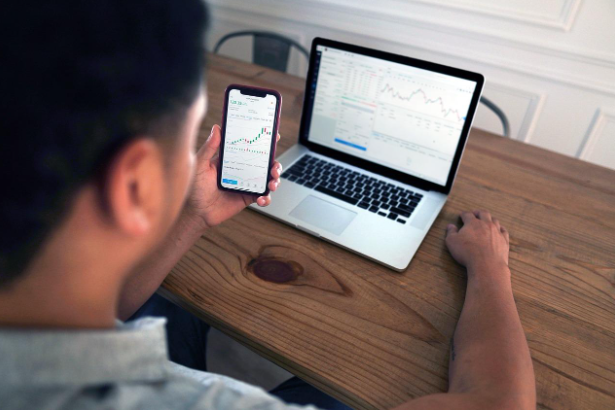High-frequency trading is all about speed and precision, and it has become a major area of focus for advanced traders who want an edge in forex trading UK. Forex traders in the UK are constantly adapting to evolving technology, market trends, and the regulatory environment, especially when dealing with GBP pairs. This article explores how high-frequency trading strategies can be leveraged under UK market conditions, focusing on liquidity gaps, price volatility, and technological advances that drive GBP pairs trading activity.
The Role of the GBP in High-Frequency Trading
When it comes to high-frequency trading in the UK, GBP pairs hold a unique position. The currency is often considered a bridge between European and North American markets, making it a target for short-term strategies. This is especially true when economic releases or market events create unpredictable swings in GBP/USD, GBP/EUR, or GBP/JPY. Even minor policy updates can trigger major price shifts, giving high-frequency traders an opportunity to profit from rapid trades. The British economy’s tight relationship with global markets means that any change—like monetary policy announcements from the Bank of England—can create high volatility windows for traders.
Regulatory Landscape in the UK
Traders operating under the UK regulatory framework need to pay attention to guidelines set by the Financial Conduct Authority. The FCA keeps a close watch on issues like market abuse, algorithmic trading transparency, and overall systemic stability. High-frequency traders in the UK must ensure that their algorithms and strategies comply with these guidelines to avoid penalties or restrictions. This regulatory environment aims to maintain orderly markets, so if you are into high-frequency strategies, it’s critical to keep up with the latest updates and adjust your approach accordingly. That might involve everything from adjusting the throughput of your trading system to making sure your algorithms meet regulatory checks.
Optimizing Technology for Speed and Stability
UK-based traders interested in high-frequency trading often invest heavily in powerful hardware and optimized software. Latency is the enemy of high-frequency strategies, so access to speedy internet connections, low-latency servers, and direct market access is key. Colocation in London’s major trading hubs can slash microseconds from order execution times. Being physically closer to major UK liquidity venues reduces the possibility of connection bottlenecks, which is crucial for traders looking to enter and exit positions faster than their rivals. Ultimately, every millisecond can make a difference in executing profitable trades.
Liquidity Windows and GBP Pair Fluctuations
Traders need to track liquidity levels in the UK market since GBP pairs can be highly active during specific windows. The London session attracts traders from across Europe and overlaps briefly with North American sessions, which often sparks higher market activity. For high-frequency traders, these overlapping sessions provide opportunities for arbitrage, scalping, and other short-term tactics. Liquidity can spike around important announcements such as UK inflation reports or speeches by the Governor of the Bank of England. Market participants who time their entries and exits to coincide with these liquidity windows can maximize profit potential, but the high volatility also calls for carefully managed risk.
Algorithmic Strategies for GBP Pairs
The core of high-frequency trading lies in algorithmic strategies that execute trades at lightning speeds. In the UK context, an algo might scan multiple GBP pairs, detect micro price discrepancies, and place trades before the majority of the market notices. Some strategies use machine learning or predictive analytics to forecast short-term price movements. Others might rely on statistical arbitrage, using complex calculations to find minimal differences in correlated markets. Advanced traders often experiment with different approaches, tailoring each algorithm to the unique characteristics of GBP pairs and the news cycle that affects them.
Managing Risk in Volatile UK Markets
High-frequency trading promises quick profits, but the rapid nature of trades can also result in swift losses. Managing risk becomes critical in a market as reactive as the UK’s. Volatility spikes can wreak havoc on algo-driven trades if there isn’t a robust risk management plan in place. Techniques such as immediate stop-loss orders or dynamic position sizing can help protect capital. Additionally, thorough backtesting and forward testing can minimize the chance of an algorithm going rogue. Traders should evaluate past GBP price data, simulate real conditions, and refine each strategy before putting real money on the line.
Future Outlook for GBP High-Frequency Trading
Looking ahead, GBP high-frequency trading is likely to remain a hot topic among UK-based traders. The UK’s market infrastructure is constantly evolving, with new technologies emerging that will enable even faster execution speeds. Regulatory bodies will continue updating their guidelines to ensure fair and stable markets. It’s important for traders to keep learning, stay current with policy changes, and upgrade their systems to remain competitive. As algorithmic trading becomes more accessible, the game is set to become more crowded, making innovation key.
Conclusion
High-frequency trading in GBP pairs under UK market conditions can be both challenging and rewarding. The UK’s tight regulations, advanced technological infrastructure, and strategic position between major financial centers create a unique space for traders to optimize their strategies. Mastering speed, compliance, risk management, and market awareness is critical for thriving in this environment. Even as new technologies emerge, the fundamentals remain the same: focus on precision, stay informed about local market conditions, and adapt your strategies to match the fast-paced nature of high-frequency trading. With the right approach, high-frequency traders in the UK can harness volatility in GBP pairs to their advantage.











